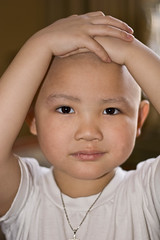Road Traffic and Childhood Leukemia: The ESCALE Study (SFCE) (29 page pdf, Environ Health Perspect, Dec.8, 2010)
The article under review today looks at the links between proximity to heavy traffic (using NO2 as an indicator of traffic emissions) and the occurrence of leukemia, the most common childhood form of cancer. Once again the 500 m range appears to critical in terms health threats from exposure and proximity to traffic.
Key Quotes:
“Traffic is a source of environmental exposures, including benzene, which may be related to childhood leukemia“
“Road traffic is a source of environmental exposure to aromatic compounds, particularly low doses of benzene”
“Leukemia is the most common childhood cancer and there are about 470 new cases each year in France”
“The rural/urban status, closely related to population density, was a strong determinant of traffic NO2 concentrations, which ranged from 10.1 to 20.4 μg/m3 in the rural areas and Paris area, respectively. The traffic NO2 concentration indicator was significantly associated with the indicators of the proximity and density of heavy-traffic roads”
“Acute leukemia (AL) was significantly associated with estimates of traffic NO2 concentration at the place of residence greater than 27.7µg/m3 compared to NO2 concentration less than 21.9µg/m3”
“There was a significant association between AL and a high density of heavy-traffic roads within 500 meters in comparison to the reference category with no heavy-traffic road within 500 meters”
“The issue warrants further research with enhanced ability to trace lifelong exposure to traffic and benzene”
Related articles
- Study Indicates Increase in Risk of Childhood Leukemia Based on Living Close to Heavy-Traffic Roads. (futureenv.blogspot.com)
- Lung Cancer Risk After Childhood Leukemia Treatment (everydayhealth.com)
- Signs and Symptoms of Leukemia in Children (brighthub.com)
- Traffic, Pollution and Scales of Exposure (pollutionfree.wordpress.com)
- Complications of Leukemia in Children (brighthub.com)
- Weighing the Long-Term Effects of Childhood Leukemia Treatment (everydayhealth.com)
- Types and Warning Signs of Leukemia (brighthub.com)
- Traffic, Air Pollution and Heart Disease in Vancouver (pollutionfree.wordpress.com)


No comments:
Post a Comment